|
2/3/2024 Off the Track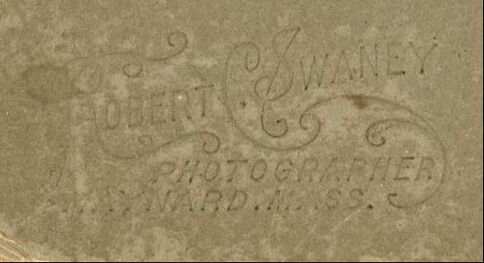 A scene that no doubt caused more pleasure for the children in the picture than the adults was captured by Maynard photographer Robert C. Swaney. The photograph came from South Acton and was clearly taken on the Boston & Maine Railroad. The photo is of a “switcher” (also known as a switching engine) that was used to move rail cars around railyards such as South Acton with its busy and complicated tracks. Whether or not the derailment happened at South Acton, we can only guess. We tried to find out more about this photograph. Researching the Boston & Maine railroad’s engine #1327 did not yield any helpful results. (Someone more knowledgeable might be able to date both the large lights on the front and the back and the painting style of the name and numbers on the engine and tender.) The next step was to find out more about the train’s mishap. Though we found many train accidents in the local newspaper as well as various mentions of a switching engine and crew, we did not find an article about a switcher derailment at South Acton. We did find one reported in Concord Junction news on the first page of the Jan. 4, 1911 Enterprise. We then researched the life of the photographer embossed on the mat of the photo. We found two pictures in the Maynard Historical Society’s digital archives that were by Robert Swaney, one of Maynard businessmen around 1910 and the other of the local Smoke Shop in 1911. Further research established the time period in which Robert Swaney would have been in Maynard taking pictures. Robert Clayton Swaney was born in West Lubec, Maine. His father George brought his family to Stow, MA about 1893. Apparently, they lived in the section known as Rock Bottom or Gleasondale that straddled the Stow/Hudson line. Robert’s mother, who lived to be 100, lived in Gleasondale for 60 years. Robert was a machinist living in Hudson when he married Hepsey Senior of Stow in June, 1899 in Gleasondale. In the 1900 census, he was living with his wife and his newborn son in Marlboro, MA. Marlboro’s 1905 directory reported that he moved to Stow, but a 1907 directory placed him in Ayer, MA, working as a motorman. (Apparently, he worked on a line from Ayer Junction to Lowell at one point.) In 1910, he was living in Hudson with wife Hepzibeth and two sons. Robert Swaney was listed as a Maynard voter on March 2, 1912, a “motorman” living and working in Maynard. A 1913 Maynard directory also placed motorman Robert C. Swaney in the town at 55 Acton St. We discovered from the Enterprise newspaper that he worked for the Concord, Maynard and Hudson Street Railway in 1915 (March 24, p. 9). An obituary in the Beacon mentioned that at some time, he worked on the line from Maynard to West Acton that passed through South Acton (Nov. 23, 1972, p. 14). We also found that a monograph in our collection about the Street Railway features a picture “from the collection of Robert C. Swaney.” When Robert registered for the draft in Sept. 1918, he was living on Haynes St. in Maynard, working as a machinist at La Point Machine & Tool Company in Hudson. A note on the 1912 Maynard voter list reported that Robert C. Swaney moved away from town in Jan. 1920. Research did not turn up any more connections to Maynard. In the 1920 census, Robert Swaney was living with his wife at 1 Bennet St., Hudson, working as a foreman at a machine shop. They were still there in 1930. In 1940, they had moved to Stow, and Robert was working as a foreman at a brake lining factory. Wife Hepzibeth died in 1948. In Oct. 1949, Robert married Mildred A. Gallant who was born in Littleton and had lived in Acton for many years. The 1950 census seems to have Robert and Mildred Swaney living with Robert’s widowed mother Laura both in Stow (High Street) and Hudson (64 Wilkins Street). (In both cases, his age was significantly understated.) A Hudson 1951 directory showed Robert living there with wife Mildred and his widowed mother Laura. He was superintendent at Standco Brake Lining Company. Robert Swaney lived for many years in both Hudson and Stow, but he died at a nursing home in Sudbury on Nov. 18, 1972. His wife Mildred had died that June. Having learned much more than we had expected about the photographer of our picture, including the fact that he had Acton connections, we found no evidence that he worked regularly as a photographer, or for very long. Robert C. Swaney would only have had a mat made with a Maynard address from, at the earliest, late 1910 to 1920. We are not sure where our picture was taken. It would be logical to think that if the accident happened in South Acton, Swaney might have taken the picture during his time working for the street railway that made its way regularly through South Acton (about the 1910-1918 period). One of the boys has a “C” on his sweater, which could imply a Concord location. On the other hand, Acton at the time was sending its high school students to Concord for their education; they, too, could have been sporting a “C.” If anyone has any further information that can help us to identify this picture, please contact us. 8/8/2023 WW1-Era Photo Album DonatedA donor just brought to Jenks Library a World-War 1 ere photo album that had been in the possession of a member of the Fullonton family of South Acton. No photos in this album are labelled, unfortunately. It is not yet known whose album this was originally, but we were able to put together some clues to help narrow it down. There are many pictures of soldiers in uniform as well as of others, undoubtedly family and friends. Some of the pictures may have been taken earlier. There are only a few clues about where the photos were taken or of whom:
To see more pages, see the full scanned album, available in our Unidentified Photos Section:
12/12/2022 Ice Storm Pictures Dated With Diary EntriesWhile we have all heard that “a picture is worth a thousand words,” those of us who deal regularly with unlabeled photographs often wish for just a few words to help us. The Society’s collections include some pictures of an ice storm that hit Acton in November a century ago. Our photographs had different years written on the backs (1921 and 1922), and we were unsure which was correct. Fortunately, diaries can be invaluable for giving first-hand information about events. In this case, Ella Miller’s diary provided the information we needed. She often wrote about the weather and mentioned no ice storm in November 1922. November 1921, however, was a different story. On November 10, 1921, Ella wrote, “Thurs. – Everything covered with ice this morning. Several wires broken in the Centre and limbs broken from trees.” One might have assumed that the November 10 ice storm was the storm in the pictures until one read more from Ella’s 1921 diary: Nov. 28: “Mon. – Ice nearly an inch thick on every twig. Lots of broken wires and limbs strew the common tonight. A small attendance at school and dangerous traveling under trees. A sort of sleet, mist, or rain most of day. No electric lights in town.” Ella's 1921 diary continues: Nov. 29: “Tues. – Still raining and freezing on & trees breaking down. The worst storm of its kind in years. No school. Mr. Edwards came to tell me he couldn’t get through & Mr. Smith turned around here with only five [students]. Pa took Aunt Emma & me down street to see the ruins.” Nov. 30: “Wed. – Sun shining and ice beginning to melt & drop off. More children at school than on Monday. Webster’s weighed one leaf covered with ice – 1 ½ lb. Have begun cleaning up the common.” Dec. 1: “Thurs. - ... Ice nearly off trees. No electric lights since Sun. night – gloomy.” We are very grateful to have photographs of Acton scenes and events at Jenks Library and, sometimes, words to explain them.
A fascinating set of handbills in our collection advertised a photographer working in South Acton in early 1856. N. L. Merrill announced on Jan. 7th that for “positively the last week,” his Daguerreotype Saloon would be operating and could save locals from going to the city to “obtain their likeness.” Pictures could be taken regardless of the weather. Merrill could even take pictures of young children “by the aid of a peculiar instrument.” He also would copy one-of-a-kind daguerreotypes and paintings. A second flyer dated Feb. 1, 1856 stated that bad weather and travel conditions had kept his Saloon in South Acton. For an additional ten days, he would provide likenesses discounted by 25 cents, after which he would move on or close down for the winter. Who Was N. L. Merrill? Curious, we consulted Steele and Polito’s monumental work A Directory of Massachusetts Photographers 1839-1900. No N. L. Merrill was listed there. Further research yielded no one of that name operating as a photographer locally, so we had to search farther afield. The only likely candidate for the South Acton Saloon’s owner was a photographer who later operated mostly in Vermont, Nathaniel L. Merrill, usually known by his initials. Oddly, we were not able to determine exactly where he came from, how he came to be in South Acton, or where he went when the weather allowed him to move on. Though historians have written about daguerreotype studios in major cities, it is very hard to learn about pre-Civil War itinerant photographers. They would have been on the move constantly, and their advertising, by handbills passed around and probably posted somewhere in town, did not generally leave traces for researchers to follow. The fact that N. L. Merrill’s South Acton flyers were preserved long enough to end up in our archives is quite remarkable. Assuming we are correct about N. L. Merrill’s identity, we were able to learn about his later career. The search took us miles from Acton but revealed the challenges of an early photographer who repeatedly adapted to changing technology and kept moving to find new markets. Digitized records, newspapers, and photographs allowed us to discover at least some of N. L. Merrill’s travels; we suspect that there were more. The early life of N. L. Merrill was difficult to uncover. The earliest information we found was a newspaper mention that “he was an excellent artist when we knew him at Irasburgh (VT), in 1850.” (Orleans Independent Standard, April 10, 1868, p.2) It seems that he traveled with a portable studio, sometimes referred to as a “daguerreotype saloon car” or a “moveable saloon.” He would presumably stay until the customers dwindled and then move on. Apparently in the course of his travels, he met Prudentia D. Waters whom he married on Jan. 25, 1853 in Johnson, Vermont. Prudentia was born and raised in Johnson, and the couple may have considered that place their home base for at least some of their time together. Unfortunately, the marriage record gives us no information that would help either to pinpoint Nathaniel Merrill’s origins or to distinguish him from many others of the same name. The record said that he was living in Portland, Maine at the time, but a Portland directory for that year yielded no photographer N. L. Merrill. Further research in the area turned up nothing useful. The next evidence of him is the pair of 1856 handbills in our archives. The 1860 census recorded him in Nashua working as an "artist," though that is the only evidence we found of him in New Hampshire. After 1860, N. L. Merrill is much easier to find because he turned to newspaper advertising and produced paper photographs with his name and location on the mats. In March 1860, the Bellows Falls Times announced that N. L. Merrill was in town with a saloon where he was taking pictures “in a very superior manner.” The enterprising Mr. Merrill had furnished the newspaper with a copied photograph that elicited a great deal of enthusiasm from the reporter. Merrill ran ads at times in the Bellows Falls Times between the summer of 1860 and at least Feb. 1862. By now he had changed technologies and was apparently settling down for a while. He announced: "MERRILL’S PHOTOGRAPH & AMBROTYPE SALOON, SPRINGFIELD, VT. The public are invited to call and examine his specimens, the only place in this vicinity where COLORED PHOTOGRAPHS ARE TAKEN. By this process life-like pictures may be obtained from old and inferior Ambrotypes and Daguerreotypes, and warranted to give satisfaction. The negative is always preserved, and persons wishing duplicates can have them at any time by ordering. LOCATED IN THE SQUARE.” (among other ads, this ran in the Bellows Falls Times, July 20, 1860, p. 4) During the Civil War years, Nathaniel L. Merrill seems to have spent a good deal of his time in Springfield. He was there working as a “Photographist” when he registered for the draft and was taxed for a photographer’s license in the 1862-1865 period. Some of his portraits from this period have been made available online including this photograph of seven young men taken in December 1864, courtesy of Brad Purinton’s Tokens of Companionship blog: The Lamoille Newsdealer of July 12, 1865 wrote that “N. L. Merrill, from Sprin[g]field, Vt., is now stopping at Johnson for the purpose of accommodating the public with any kind of a picture known to the photographic art. He has had a large experience in the business, and will be remembered by some in this vicinity as the man who first introduced a daguerreotype car into this part of the country. – He has erected a temporary saloon, which he terms a “Camp,” on the Common near Denio’s hotel, and commenced business in it on Monday last.” (p. 3) The camp was apparently well-attended and patrons’ “urgent solicitations” led him to stay in Johnson during August as well. Around this time, N. L. Merrill seems to have bought property in Johnson. He must have sold his Springfield business, because the back of a portrait taken by J. D. Powers of Springfield, Vt., says “We have also N. L. Merrill’s Negatives in preservation, and will furnish copies when ordered.” (eBay offering, August 2022) Merrill was on the move again. He ran an ad in 1866: “Mr. N. L. Merrill, the veteran artist, has pitched his ‘camp’ near the American House in this village (Hyde Park) and will remain four weeks for the purpose of supplying the people with Photographs, Ambrotypes, and Melanotypes, of the highest perfection. Copies from old and inferior pictures can be obtained and enlarged and finished in India Ink or colors, also card Photographs for the same. A good assortment of Phot[o]graphic Frames and Albums always on hand. His reputation as an artist is well established in this vicinity. Pictures can be made in cloudy as well as fair weather.” (Lamoille Newsdealer, June 6, 1866, p. 4) N. L. Merrill moved on to Cambridge Borough, VT a few weeks later. At times, he rented rooms rather than establishing a “camp.” A woman’s portrait recently offered on eBay was marked on the back “N. L. Merrill, Photographer, Rooms over Kinsley & Bush’s Drug Store, Cambridge, VT.” In April 1868, N. L. Merrill leased a photographer’s “saloon” in Barton Landing in northeastern Vermont. He was listed in the Vermont State Directory of 1870 in Johnson, though the 1870 census shows him in Montgomery, Vermont. (The entry listed Nathan Merrill, photographer, married to “Patience.” Presumably he was passing through town and the census taker did not work too hard on the details.) N.L. Merrill also had a studio in Dunham, in the Eastern Townships of Quebec where he was listed in Lovell’s Canadian Dominion Directory in 1871. The Brome County Historical Society holds a portrait taken by him there. In 1872, N. L. Merrill seems to have had a studio in Enosburgh Falls, Vermont, from which he moved on and a different photographer set up shop. A portrait posted online showed that at some point, N. L. Merrill also took pictures in Richford, Vermont. In the early 1870s, N. L. Merrill seems to have returned to Stowe, Vermont fairly often. According to the back of a portrait available online, he set up shop in Stowe with a company name of “Mt. Mansfield Picture Gallery.” (Another photo for sale on ebay showed the same gallery with a different photographer, so he may have bought out or sold to a photographer named O. C. Barnes.) In December 1872, N. L. Merrill closed his Stowe gallery for a few weeks and went to Rouses Point, across Lake Champlain in New York. The back of a photograph recently listed on ebay confirmed that N. L. Merrill indeed took pictures in Rouses Point. Merrill was in Stowe again in October 1873 but planned to pack up soon “and go where there are more faces.” (Lamoille Newsdealer, Oct. 15, 1873, p.4) In 1874, he reappeared in Stowe In May and September when the Argus and Patriot reported that N. L. Merrill was “again prepared to make those new style photographs.” (Sept. 3, 1874, p. 3) In addition to portraits, he took a series of Stereoscopic Views of Stowe Village, Mount Mansfield, Smugglers’ Notch and a number of nearby waterfalls. An advertisement for his gallery in Churchill’s Building in Stowe mentioned that he stocked frames, albums, brackets, knobs, and cords, along with a collection of stereoscopes and stereoscopic views. Unfortunately, there was quite a bit of competition in the “view” business, so it may not have been profitable for him. We have not found that he did any other series. The New York Public Library has a stereoscope view taken by N. L. Merrill available online, and the reverse side shows his other subjects. N. L. Merrill returned to Johnson repeatedly; by the 1870s, it was clearly his home base. In Dec. 1876, N. L. Merrill of Johnson was “taking all kinds of pictures at the photographic gallery of Mrs. B. W. Fletcher” in Waterville, VT. (Burlington Weekly Free Press, Dec. 15, 1876, p. 3) An ad in the April 25, 1877 Lamoille Newsdealer announced that N. L. Merrill would keep his Johnson photographic gallery and saloon open a few weeks longer. In July 1879, Merrill did a short stint in South Troy, Vermont, but then returned to Johnson. Nathaniel, “Photographist,” Prudentia, and daughter Mary were living there at the time of the 1880 census. The two photographs below have been made available online by Special Collections at the University of Vermont's Baily/Howe Library. Both have “Merrill, Johnson” printed on the mats. They were identified on the backs with a name, hometown, and “Classmate J. S. N. S.,” referring to Johnson State Normal School; its students would have been a good source of business for a portrait photographer. We found less frequent evidence of N. L. Merrill’s activities in the 1880s, but he was still at work. He set up a studio in Enosburgh Falls, Vermont in September 1883, but he was listed in the Lamoille County Directory of 1883 and the 1887 Vermont Business Directory as a Johnson photographer. In November 1885, daughter Mary was married to Hannibal Best at the Merrill residence in Johnson. A quit-claim deed dated Nov. 14, 1888 shows that Nathaniel, his wife Prudentia, her nephew Samuel H. Waters, and his wife Juliette sold lands and tenements in Johnson. (Three mortgages had been executed on the property/properties in 1865, 1869, and 1872.) N. L. Merrill was apparently still living in Johnson, however, while taking photographs in Waterville in Sept. 1889. In Feb. 1890, the St. Albans Daily Messenger reported that N. L. Merrill, who had had a photographic business in Johnson for many years, was moving to live with his daughter and her husband Hannibal H. Best in Enosburgh Falls. The News and Citizen reported that he was dangerously ill in mid-February 1891 and that he died in Enosburgh Falls on Feb. 26, 1891. Unfortunately, we have not found a death record or full obituary for him. A burial notice in the St. Albans Messenger on March 5 said that he had been an invalid for years, but according to an advertisement in the News and Citizen, he had been working as a photographer in Johnson as late as January 1890.
Back in Acton When we first found the flyers for N. L. Merrill’s daguerreotype saloon, we thought that he would be local and that we could easily track down his life story. What we discovered was Nathaniel L. Merrill, a Vermont photographer who had to be on the move constantly in the decades that followed 1856's saloon. We pieced together many of his movements after 1860 from digitized newspapers, records, and photographs, but we were not able to trace his origins. Different records gave his birthplace as Maine, New Hampshire or Massachusetts, and we found no source that mentioned his parents or siblings. Most of his early travels with his daguerreotype saloon in the 1850s are also unknown, including why he came to Acton (assuming our identification is correct). Any additional information would be appreciated. Clearly by 1856, the people of Acton, and South Acton in particular, could easily have had their pictures taken if they could afford it. One has to wonder what happened to the likenesses taken that winter; we would love to have scans of local pictures taken by N. L. Merrill. The Society and Iron Work Farm have rare pictures taken of local buildings lost to fire in the 1860s. They could have been Merrill’s work, or perhaps there were done by other itinerant photographers who offered their services in mid-nineteenth century Acton. It is even possible that we could have early N. L. Merrill pictures in our collection. Unlike paper photographs with mats that showed the photographer, location, and sometimes the subject of the picture, early photographs in their metal or leather cases were much harder to label. We have a collection of beautiful early portraits of unknown people done by unknown photographers; it is frustrating that no one labelled them while there was a chance of identifying them. (A selection is here.) Photography was new at the time; perhaps people simply did not imagine that eventually likenesses would survive but people’s memories would not. If your Acton ancestors’ likenesses or their photographs of local scenes are in your possession, we would be very grateful to add scans (or originals) to our collection. Please contact us. Sources Used (in addition to standard genealogical resources): 7/23/2022 A Birthday Bash with a SurpriseThe Society recently had an open house after a long period of COVID-related closure. The date was chosen for its proximity to Acton’s traditionally-celebrated “birthday,” the anniversary of its formal organization as a town on July 21, 1735. Researching how the town had marked its other birthdays, we came across a scrapbook from Acton's bicentennial celebration in 1935. The more we read, the more we appreciated how ambitious an undertaking it was for a town of 2600 people. 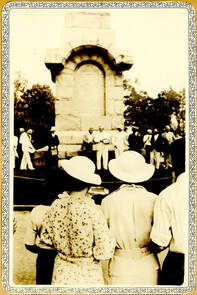 Gov. Curley Reviewing Parade Gov. Curley Reviewing Parade Acton’s 200th birthday was celebrated with a town-wide, three-day extravaganza. The event began at sunrise on July 20th with church bells ringing and a town crier announcing the occasion. The town was also greeted with an “unofficial” cannon salute orchestrated by Nelson Tenney. A Faulkner family reunion took place that day and brought numerous family members to the old homestead in South Acton as well as an impromptu reenactment of the activities there on April 19, 1775. The bicentennial celebration officially kicked off with a parade of military units and “motor floats” starting at 3 p. m., forming near the Faulkner House and heading to West Acton over Central Street. Participants were trucked from there to Acton Center where they were joined by civilian units west of Taylor Road on Main Street. They marched on Main Street through the center, passing the Monument where they were reviewed by dignitaries such as Massachusetts’ governor James M. Curley, ex-mayor of Boston John F. “Honey Fitz” Fitzgerald and other local notables. The parade ended at the Schoolhouse on Meetinghouse Hill. After the parade, there were speeches by the politicians and a rendition of “Sweet Adelaide” sung by John F. Fitzgerald. Florence Piper Tuttle, a poet and Acton native, read “Acton Speaks,” a poem composed for the occasion. After more speeches and a supper provided by one of the women’s clubs (reports varied as to which one), there was a band concert given by an American Legion Post Band from Watertown. On Sunday morning, the churches in town observed the occasion in various ways. The South Acton Universalist church had a memorial service for Lucius Hosmer, a former member who was born on the site of the church. He became a noted composer of his time and had written a piece for the celebration that he had planned to conduct. Unfortunately, he had died unexpectedly earlier in the year. On Sunday afternoon, there were open houses at fifteen of the oldest homes in town, followed by a concert on the Common entirely devoted to the work of Lucius Hosmer. His piece “The Acton Patriots,” composed for the occasion, was one of the pieces. The orchestra was part of the Emergency Relief Administration’s music program. In the evening, there was a community service that involved the pastors of the town’s churches and a 60-person community chorus under the direction of Harold Merriam. On Monday July 22, librarian and artist Arthur F. Davis led a 50-vehicle automobile tour over the approximate route taken by Capt. Isaac Davis and his Minutemen company to Concord on April 19, 1775 and then back past the Robbins farm site where a rider had spread the news to Acton that “The Regulars are coming.” Jenks Library has copies of the annotated tour itinerary. Next on the day’s agenda was a historical pageant that involved about 10% of the town’s population, held on the Acton Fairgrounds behind town hall. The E. R. A. orchestra apparently was involved as well. The celebration wrapped up with a Military Ball on Monday evening at Exchange Hall attended by invited guests (including Honey Fitz) and about 300 couples. The Liners Broadcasting Orchestra gave a concert there at 8, followed by a Grand March. Dancing then followed until 1 a.m. One has to be impressed with the effort that Acton residents put into celebrating their town’s bicentennial. According to newspapers, they were rewarded with the attendance of large crowds, 12,000 or more showing up on Saturday and 6,000 or more for the pageant. (It is not clear how accurate the estimates were. The Herald estimated 10,000 at the pageant.) There undoubtedly were many memorable moments for the participants, but judging from newspaper articles about the weekend, the most newsworthy event happened during the parade. The parade was in three divisions. First came the grand marshal Maj. Charles S. Coulter on his horse. He was followed in an open car by first division marshal George L. Towne, the last living member of the Capt. Isaac Davis Post of the G. A. R. Next came military units, including a band from Fort Devens, followed by a long line of army trucks that were used to transport marchers from West Acton to Acton Center to finish the parade. The second division was led by its marshal Lowell Cram and the Watertown American Legion band that drew particular attention because of its “girl drum major,” evidently a surprising sight at the time. Following them were about thirty decorated floats from Acton civic and other organizations such as the American Legion Auxiliary, Boy Scouts, Woman’s Clubs, Odd Fellows and Winona Rebekans, Grange, and the Concord Reformatory. The third division seems to have been made up of local, civilian and veteran marchers and horse-drawn vehicles. 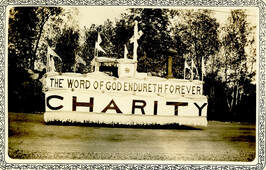 West Acton Baptist Church float West Acton Baptist Church float Governor Curley and the others reviewing the parade by the Monument had just seen the Center fire company go by. They were then able to see, five hundred yards away, a float farther back in the parade going up in flames. One can imagine the chaotic scene as the firemen took their chemical apparatus and raced back past the other marchers “with sirens screeching and bells clanging” to fight the fire. Reports mentioned that hundreds headed toward the excitement, necessitating a good deal of crowd control by local police and American Legion members helping out. The burning float represented the West Acton Baptist church. A sturdy framework had been built on top of and all around a truck owned by Jesse Briggs. The framework was then decorated with religious messages and flags. The float featured a pulpit displaying an antique Bible from the church. Driving the truck was the church’s organist, Alden Johnson, accompanied by the truck owner’s son Russell. When the engine caught fire in front of Horace Tuttle’s house on Main Street, Mr. Johnson pulled over. The doors being blocked, both men had to climb out of the truck’s windows and jump to safety. The firefighters were on the scene quickly, but they had a hard time getting to the engine fire, as the float was so well built that it took time to rip it apart. Somehow, the items on the float that belonged to the church made their way safely into the hands of its pastor, and no one was injured. The truck, however, had a very bad day. The importance of the bicentennial celebration to the townspeople who took part is evidenced by the large number of related items that were carefully saved and eventually donated to the Society. We have programs, articles describing the events, souvenirs, pins, photographs including three copies of a panoramic picture of the pageant’s participants, pageant dialogue written by Evelyn Knowlton, clothing worn in the pageant, a telegram sharing the news that one of the expected speakers was hospitalized, and letters from invited dignitaries who did not attend. Among the pictures, there is even one of the church float before its demise. Newspaper photographers were on hand to capture the firemen at work, their pictures accompanying articles with headlines such as “Two Jump from Blazing Float,” “Two Men Leap from Burning Float During Spectacular Parade in Acton,” and “Men Narrowly Escape Flames as Decorated Truck Bursts Forth in Fire at Height of Great Bi-Centennial Celebration with Governor as Guest.” The Boston Herald may have referred to “the little town of Acton, almost forgotten but sturdy and proud” (July 14, 1935, p.6), but those who attended the parade seem to have found Acton quite memorable. A Selection of Items in the Society's Collection: Sources Available Online:
“Acton Bells Will Ring on 200th Anniversary,” Boston Globe, July 13, 1935, p.20. “Acton Plans Three-Day Gala Celebration July 20, 21-22,” Concord Enterprise, July 3, 1935, p. 1. “Acton’s Bi-Centenary,” Boston Herald, July 14, 1935, p. 6 B. “Acton Celebrates 200th Anniversary”, Concord Enterprise, July 17, 1935, p. 1. “Acton Marks Bi-Centennial,” Boston Herald, July 20, 1935, p. 15. “Acton Cannon Booms at Sunup,” Boston Globe, July 20, 1935, p. 3. “Two Jump from Blazing Float in Acton as 200th Anniversary Fete Opens, “ Boston Herald, July 21, 1935, p. 1. “10,000 Attend Acton Exercises,” Boston Herald, July 22, 1935, p. 10. “Faulkner Family Annual Reunion,” Boston Globe, July 22, 1935, p. 19. “Military Ball Ends Acton Fete – 10,000 Witness Pageant Celebrating Town’s 200th Anniversary,” Boston Herald, July 23, 1935, p. 24. “Firing of Salute Opens 200th Anniversary in Acton” and “Military Ball Final Event of Observance,” Concord Enterprise, July 24, 1935, p. 1, 4. Additional Scrapbook Clippings with incomplete references: “Acton Celebrates 200 Years as a Town,” Boston Transcript, no date. “Historic Glories of Acton to Be Renewed,” Boston Post, no date. “Acton Holds Successful Bi-Centenary Celebration,” Concord Journal, no date. “Expressions of Regret” (from Franklin D. Roosevelt and Carlos B. Clark), no newspaper or date. "Blaze in Acton Parade Float Provides Thrills for Throng,"probably Boston Globe, no date. "Firemen Provide Real Exhibition of Quick Work," Boston Globe, no date. “Churches of Acton Note 200th Observance, Boston Globe, July 21, 1935. “Church Notes,” (South Acton), no newspaper or date. “Little Acton,” Boston Post editorial, July 16, 1935 (no page) “Pageant Brings Acton’s Celebration to Close,” labeled “Boston Globe, July 22, 1935,” but it was not in digitized version (or perhaps edition) of that day’s Globe. 8/20/2021 Acton in the CityThe Society has a large collection of pictures that apparently came from an East Acton family. A few identified portraits were of people with surnames Flagg, Wetherbee, Robbins, and Rouillard or of classmates of Ernest Wetherbee (high school class of 1887); we expect that the pictures are of relations, friends and East Acton neighbors. (See the collection here; we need identification help.) Some of the pictures in the collection seem to have been taken in Boston. One picture appears to be the public garden with a swan boat on the left. One picture was of a float in a parade. Zooming in on the details shows a street sign on a building indicating that it was taken on Lexington Street in East Boston. Though East Boston had a number of parades, big ones were held on the 4th of July. The subject of the picture is a float with men in patriotic uniforms holding oars. It is likely that it was the tableau of Washington Crossing the Delaware that was mentioned in a July 2, 1895 Boston Post article (p. 2) as a feature of the upcoming parade. The participants were listed; we had hoped that the participants on the float were Acton men or relatives, but the names were not familiar. The sponsor of the float was Jewett Lumber. If our hypothesis is correct, the historical significance of this picture is that the 1895 parade became infamous for rioting between nativists/Orangemen and Irish Catholics. Nativists (members of the American Protective Association) had entered the parade with a “little red schoolhouse” float that today seems innocuous but at the time was a symbol of anti-Catholic, anti-parochial school sentiment. The purpose seemed to be to provoke trouble with the Irish Catholic population of East Boston. Many stories, some conflicting, appeared in newspapers in the days that followed, but what is clear is that when the rioting was done, one man had been killed, others injured. We did not see any mention of Acton participants in either the parade or the melee. Turning to other pictures in the East Acton collection, two of them were taken on a ship. Judging from the ladies’ sleeves, the pictures were probably taken in the 1890s, perhaps the middle years. In both pictures, a woman is holding a bouquet; one hypothesis is that it was an excursion on her special day. In the top picture, writing on the ship’s bell appears to say “Yarmouth,” indicating that the people were on board the ship of that name, run by the Yarmouth Steamship Company to take passengers from Boston to Yarmouth, Nova Scotia and back. In the second picture, a sign on a building says “Beach & Clarridge Co.” In the 1890s, Beach & Clarridge was located at 52-58 Eastern Avenue, meaning that the boat was in Boston Harbor, probably taking on passengers at Lewis Wharf. Ads from the mid-1890s confirm that the Yarmouth Steamship Company sailed from Lewis Wharf. (A photo of the deck of the SS Yarmouth in 1894 leaves little doubt that this is the same ship.
After identifying the ship, we were hopeful that we could find a local newspaper announcement of an East Acton family’s trip that might give us clues as to the identity of the people in our pictures. There were a surprising number of trips to Nova Scotia mentioned during the 1890s. Unfortunately, despite learning more about our pictures, we have not yet figured out who the people are; if you can help us, please contact us. 11/25/2020 Early Acton Football Revisited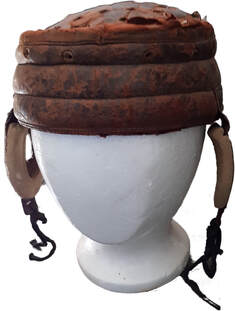 For those who are missing Thanksgiving high school football games in this strange 2020 holiday season, we offer some glimpses of football in Acton’s past. A favorite item in our collection is an 1890s leather football helmet. We are grateful to relatives of Ernest R. Teele who donated it. There are ventilation holes around the top, and it offered a bit of padding, but it was a long way from today’s headgear. Previously, we had written a blog post about the West Acton football team after seeing a team picture that only identified Ernest Teele (front row, second from left). In the time since, we have discovered other copies of that and a similar photograph of the team, both taken by Eugene Hall. (A number of his glass plate images were donated to our Society). However, we have not made any more progress on identifying the players. Some of our best discoveries at Jenks Library happen when we are searching for something completely different. We recently came across a reference to a 1960s slide copy of an old Acton football team photograph. Expecting that it would be a duplicate of the Eugene Hall pictures that we had already seen, we scanned the slide and discovered a different image. It had some familiar faces from our other pictures, but most importantly, names had been listed on the back. Trying to interpret the name list, we believe that the pictured men are as follows (corrections welcome!):
Among the players was William Rodway. This was a familiar name; as discussed in a blog post, he served in the Spanish American War a few months after this picture was taken. He made it back to a hospital in New York but died of disease there on October 18, 1898. He was known as “a young man of fine personal appearance and splendid physique” (Concord Enterprise, Oct. 27, 1898, page 8), so his succumbing to disease must have been a shock to his teammates and the community. For reasons that are unclear, when Acton’s monument to its Spanish American War veterans was put up, his name was left off of it. Now, at least, we have an identified picture of him. (As it turns out, he was front and center in the Hall pictures, as well, which jibes with our knowledge that he was team captain in 1896-7.) Another discovery that we have made since our original blog post on early football in Acton was that the West Acton team existed longer than we had thought. The 1900 team played Maynard High School on its baseball grounds on Thanksgiving. (Concord Enterprise, Nov. 29, 1900, p. 4) The following year, there was a Thanksgiving game between South Acton and West Acton football players. The rosters:
The Concord Enterprise’s South Acton correspondent described the game as “one-sided,” leaving the “West Acton linesman nothing to be thankful for,” while the “half-frozen spectators” looked on. The final score was 21-0. (Dec. 4, 1901, page 8) Here’s hoping that by next year, we will have the privilege, if we so choose, of braving Thanksgiving weather to attend our own favorite events. Cheering on friends and family in person sounds pretty good this year, cold or not. 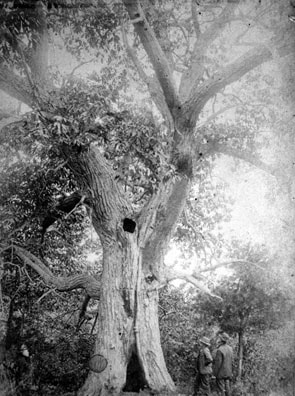 Original picture was found in a South Acton attic, current location unknown. AHS has photograph of original. Original picture was found in a South Acton attic, current location unknown. AHS has photograph of original. The Society’s collection includes a copy of a picture of two men and a woman looking up at an ancient tree that is believed to have been located on the Hapgood property in East Acton. All traces of the tree are long-gone. In former days, however, the tree was quite well-known. James Fletcher’s Acton in History (pages 279-280) described it as “one of the original settlers of the town,” thriving when Captain Isaac Davis and Acton’s company of minutemen passed by on their way to Concord’s North Bridge in April, 1775. Thoreau, who had a great appreciation for old trees, apparently was well-acquainted with the Hapgood chestnut. We have yet to find a mention of it in Thoreau’s writings, but Emerson wrote in his journal on 6 August 1849 that he and Thoreau had walked to Acton the day before and had visited a big chestnut tree on Strawberry Hill. That jaunt was apparently not Thoreau’s only visit. According to local historians, townspeople referred to the tree as “Thoreau’s Chestnut” because of his habit of stopping there. Thoreau was definitely back on the Hapgood land to do surveying in 1853; his woodlot survey is held at Concord Public Library. Fletcher’s History tells us that Thoreau visited the old chestnut tree with his sister and measured the trunk at twenty-two feet in circumference. The Thoreau siblings’ visit must have been before May, 1862 when Thoreau died. The tree continued to grow and, no doubt, attracted more visitors. In his 1890 History, Fletcher wrote: “The interior of the tree is hollow. The cavity is circular, sixty inches in diameter and twenty-five feet in height, through which one may look and see the sky beyond. An opening has recently been cut at the bottom and entrance can be easily made. There are worse places for a night’s lodging. A good crop of chestnuts is yearly produced by its living branches. The town should get possession of this luscious tablet of the bygones and see that no ruthless axe take it too soon from the eyes of the present generation.” Our photograph matches Fletcher’s description of a large tree, hollow inside, with an opening at the bottom and a hole up high, through which one could presumably see the sky. The fact that Fletcher wrote that an opening had been cut at the bottom “recently” might indicate that the picture was taken in the late 1880s-1890, but it is possible that a gap had existed previously and simply had been enlarged. Our picture shows three people observing the tree; we have not been able to prove their identities. Despite the tree’s local fame, its end seems to have been unrecorded in town reports and the local newspaper. The chestnut may have succumbed to a “ruthless axe” or to the devasting effect of the chestnut blight in the early twentieth century. The chestnut blight, a fungus that destroys the trees above ground and makes it impossible for young trees to mature, was discovered in New York in 1904. Believed to have been imported on nursery stock, it started spreading, reaching Massachusetts some years later. We searched the Concord Enterprise for news of local chestnuts. At first, the few mentions of chestnuts involved “normal” activity and concerns. For example, in 1907, West Acton lumber dealer Arthur Blanchard sent his portable sawmill operation to South Sudbury to harvest two lots of chestnut that he had purchased. (Jan. 2, 1907, p. 1) That fall, Arthur M. Whitcomb was making barrels with chestnut staves in the old overall shop in West Acton. (Sept. 18, 1907, p.5) In October 1911, Maynard landowners were complaining that young trespassers, senselessly shooting at small birds, were damaging chestnut trees; “the terrible abuse which the trees are subjected to are simply ruining them and very soon there will be few decent chestnut trees about here if a stop is not put to this practice.” (Oct. 25, 1911, p. 3) The landowners were, possibly accidentally, quite prescient; spores of the blight-causing fungus found entry through wounds in chestnut trees’ bark. The Boston Herald (Jan. 21, 1912, Sunday Magazine, p. 1) reported on the spread of the chestnut fungus and the experience of other states. At that point, the blight had started to show up in Massachusetts, particularly on the Connecticut border. Historically, the chestnut had been admired by and useful to the people in its range, providing wood products, abundant nuts in the fall, and shade. By the time the blight was discovered, chestnut trees, naturally rot-resistant, were the primary local source of telephone poles and railroad ties. They were also used by furniture makers, carpenters, and tanneries (an important Massachusetts industry). Ecologically, the loss of the chestnut was even worse, as it was also a major source of food for wildlife. (For more information about the blight, see a Report by the Forest Service.) Despite the ecological and economic damage caused by the fungus, there was little mention of it in Acton sources as the blight spread. The town’s annual Tree Warden reports made no mention of the loss of chestnuts or of the blight during the whole 1904-1940 period. This could be because farmers, fruit growers, and landowners were coping with the arrival of brown-tailed and gypsy moths, San Jose Scale, and the elm leaf beetle. It could also be that most of Acton’s American chestnuts had already been cut down. Turning back to the Concord Enterprise for news of local chestnuts, we learned that they did not all go at once. In November, 1916, children headed out from the West Acton Baptist church “chestnutting” in the towns of Boxboro, Harvard and Stow. The report was that they were not very successful in their hunt, but they had a good time playing hide and seek. (Nov. 1, 1916, p. 10) In December of that year, the Enterprise started mentioning the blight in general terms. (Dec. 20, 1916, p.2) Two months later, it was noted that people were “cutting down the forests at a fearful rate” and that disease and insect pests, including the chestnut blight, were causing great harm. (Feb. 21, 1917, p. 2) In April, 1917, the paper discussed the white pine blister rust that appeared set to destroy the pine forests, an extremely alarming prospect for Massachusetts, though it was believed that the rust could be stopped much more easily than chestnut blight. (April 18, 1917, p. 7) In 1919, the local paper reported that farther west in Massachusetts, a town was so hard-hit that townspeople believed that all the “old spread” chestnuts would be gone within three years. (March 19, 1919, p. 4) On Oct. 22, 1919, the Enterprise finally commented directly on the fate of local chestnuts, saying that the blight seemed to be destroying them and that there was no known way to combat it. (p. 2) As the destruction of chestnut trees began to seem inevitable, experts urged landowners to cut down the trees before they were too far deteriorated to be of economic use. We do not know if that was the fate of Thoreau’s Chestnut or not. We do know that its owner Benjamin Hapgood died in 1920, and his farm was auctioned off in 1923. An ad for the auction advertised, among many other items, a “lot of Chestnut 2x4 and 2x6.” Where the lumber came from, we have no way of knowing. (Enterprise, Nov. 14, 1923, p. 1) Whatever happened to Thoreau’s Chestnut, it is clear that only a few recorded memories are left. If you have pictures or stories about it, or if you can help us to confirm the identity of the people and the tree in our picture, we would love to hear from you. Please contact us. 9/4/2019 The Barrel Shop That BurnedWe were alerted recently to a wonderful collection of photos on the website of Brookline, New Hampshire's Historical Society. One of the pictures was of a truck, fully-loaded with barrels. The truck’s door identifies it as belonging to Davis King Co., West Acton. One of our members recognized the house in the background as the James W. Hayward house in West Acton. The photographer would have been standing in front of the Davis King Garage that stood at approximately today’s #576 Massachusetts Avenue, looking across the street. At the extreme right of the picture, one can see the West Acton depot. Neither the Hayward house nor the depot is standing today. Looking through the Brookline photo database, we discovered several other West Acton pictures. Some of them are duplicates of photographs in our collection of the devastating West Acton fire of 1913. Other pictures were completely new to us and are used in this article with the kind permission of Brookline’s Historical Society. In the process of trying to match places and dates of the Brookline pictures with our own photos and information, we learned a good amount about West Acton village in the years immediately before and after the fire. Starting from the beginning... Why had pictures of West Acton buildings, barrels, and firefighting ended up in Brookline, NH? Thanks to a helpful index to the pictures in the Brookline collection, we quickly discovered the connection. Orville D. Fessenden of Brookline, New Hampshire invested in a barrel-making enterprise in West Acton. The pictures of buildings, the loaded truck, and the West Acton fire related to his business. In the Brookline collection are two pictures taken from current-day Spruce Street (then called School Street): At first, we thought that both of the pictures were taken at approximately at the same time, because the close-up of the barrel shop seemed to be exactly the same building as the one in the background of the wider Spruce Street picture. Local sources tell us that the July 1913 fire destroyed the barrel shop. However, the index from Brookline indicates that the pictures were actually taken before and after the fire. Obviously, the barrel shop was rebuilt; we investigated newspaper and other sources to learn more. (Unless otherwise noted, all of the articles referenced were in the Concord Enterprise.) The earliest mention that we can find of Orville D. Fessenden’s business connections to Acton was a May 25, 1910 news item in the Concord Enterprise announcing that O. D. Fessenden had unloaded a carload of barrel hoops for his barrel shop and would have two men making barrels there soon. (p. 10) Work started at the shop on June 6. (Jun. 8, p. 6) We had found mentions of a cooper shop in West Acton in the vicinity of the site that was built in 1904, burned, and rebuilt in 1905, but we do not know whose it was and whether O. D. Fessenden took it over or started his business from scratch. The Fessenden business succeeded. By August 1910, the Enterprise announced that “barrels at the barrel shop are fast disappearing." (Aug. 24, p. 8) In the first week of September, George Rockwood and Frank Williams made 800 barrels in six days. (Acton-Concord Enterprise, Sept. 14, 1910, p.8) By October, it became apparent that Fessenden’s shop could not keep up with the demand. “There is a great demand for apple barrels and it is hard for the farmers to get enough barrels to use. The barrel shop does not begin to supply the trade. During the week several cars of carrels [sic] were shipped from other places.” (Oct. 10, 1910, p.8) Experience showed that more barrels needed to be produced and stored ahead of time to meet peak demand. In 1912, work started in April when Louis Popple and George Rockwood came down from Brookline, NH to start production. (April 4, 1912, p. 10) In August of that year, the Enterprise announced that O. D. Fessenden and George W. Burroughs (of Boxborough) had bought from the estate of O. W. Mead the cold storage property near the barrel shop and two tenement houses. (Aug. 14, 1912, p. 8) By that time, the operation was able to accommodate large orders such as the purchase by Charles W. Barnes of 1,000 barrels for his Stow fruit farm (September 18, 1912, p. 10) The April 30, 1913 Concord Enterprise announced that ”Work at the barrel shop will soon commence, to be ready for the large demands for barrels the coming season.” (p. 8) It was an optimistic time. In that same month, the pastor of Maynard's Catholic Church thanked non-Catholics who had donated funds for building a Catholic Church in West Acton, close to the storage facility that Fessenden and Burroughs had purchased the year before. One of the larger donors mentioned was O. D. Fessenden. (Apr. 23, p. 10) Everything was going well. Then came the fire. The West Acton Fire of 1913 On July 22, 1913, a fire was first noticed at Luke Blanchard’s barn near the corner of today’s Massachusetts Avenue and Windsor Avenue, just west of the railroad tracks. Soon, it had “jumped the tracks” and spread to the Hutchins house at 556 Massachusetts Avenue. From there, the fire spread across Massachusetts Avenue to destroy commercial buildings including an ice house, a grain storage shed, and a milk depot. The next stage was across today’s Spruce Street where the Fessenden barrel shop and cold storage facilities were. (What at first seemed to be generic pictures of the West Acton fire in the Brookline, NH collection turn out to have featured destroyed remnants of the Fessenden business.) The final stage of the fire seems to have been east on Massachusetts Avenue where the barn of Walter Gardner was destroyed and his house damaged. Fighting the fire was a challenge. The West Acton company went right to work, but they were hampered by equipment problems. New hose had recently been purchased but was incompatible with the available nozzles, necessitating that the firefighters work with old hose that lost water pressure through leakage. According to the July 23 Enterprise, “It was early seen that the local department could not possibly cope with the blaze and calls for help were sent to Maynard, Concord, Fitchburg and Ayer, while the companies from South Acton and Acton Center also responded.” The Maynard company was given most of the credit for saving the depot and St. Elizabeth’s church, and the Concord Junction department saved the school house and some of the nearby homes. (p. 8) Later, Maynard’s fire department refused to accept payment for their efforts, suggesting that someday Acton might need to return the favor. (Aug. 31, p. 2) One of the fascinating features of researching this particular fire is that amateur photographers were on the scene almost immediately. Fortunately, many of these pictures were saved, giving us visual evidence of the fire’s progression and its aftermath. What at first might seem to be blurry or overexposed pictures are in fact photographs of people and structures amidst smoke. In the following photograph of the fire (from our own collection), the Fessenden barrel shop is still standing, while the cold storage facility (on the right) had clearly already been reduced to its brick foundation. The fire was still being worked on at the time. Note the railroad crossing sign where a siding went next to the cold storage building and the stone work at the extreme right by the front steps of St. Elizabeth Church: We might have thought, based upon that picture, that the barrel shop survived the fire. Written accounts said it was lost, however, and a photo in our collection confirmed it: Another view of the same scene taken only a few feet away confirms the identification of this building; the wall of what was obviously the barrel shop was still standing, while the rest had been destroyed: The damage to Fessenden & Burroughs was obviously large. They not only lost the shop and storage buildings but also the barrel inventory that had been created in anticipation of the 1913 apple season.
After the Fire Rebuilding West Acton started right away. In the words of the Concord Enterprise, “Already plans are being made by the several losers to rebuild at once.” (July 30, 1913, p. 8) Fessenden and Burroughs had sustained a huge loss that apparently was not insured. They probably had to raise cash quickly, because the same Enterprise reported that “C. H. Mead has bought a piece of land of Fessenden Burroughs in front of the big cold storage building just burned, where he will build a large storehouse for grain, hay and flour.” This news item confirms that the C.H. Mead building in the Brookline, NH picture was newly built after the fire, not a replacement of a building previously on that spot. By August 11, George Rockwood was back in town, presumably to get the barrel business restarted, although the paper was silent about how and when the barrel shop was rebuilt. (Aug. 13, p. 8) Work clearly proceeded, because the November 5 Enterprise reported that barrel shop workers Popple and Rockwood were returning to their homes in Brookline, N. H. and that barrel shop had done “a rushing business all season.” (p. 10) In the spring of 1914, the cold storage building was rebuilt. On June 10, the Enterprise reported that O. D. Fessenden “of Townsend” had several carpenters working on a new structure over the “cold storage brick wal[l], where the fire was last summer. The building will be used to store barrels which are made here.” (June 10, 1914 p. 7). It seems to have been a good investment. In October, the paper reported that George Rockwood, foreman, said that he had already sold 10,000 barrels, with more to come. Several men were working to fill waiting wagons with barrels. (Oct. 14, 1914, p. 10) The 1915 and 1916 seasons were also described as “rushing,” “prosperous,” and “booming.” (Oct. 20, 1915, p1, Oct. 18, 1916, p. 4) The aftermath of the fire continued, however. In January, 1914, Orville D. Fessenden and George W. Burroughs both sued the Boston & Maine Railroad for allegedly setting the fire with sparks from a passing train. The causes of the fire probably had been debated endlessly in town. However, despite early rumors of arson, over the following months, the Enterprise was silent about investigative conclusions. The related lawsuits were for damages from the burning of buildings, (presumably the cold storage building and the barrel shop), barrels, coopers’ supplies and tools. (Boston Herald, Jan. 8, 1914, p. 12) The triple-action tort case took three years to come to trial. Finally, the case was heard at the Superior Court in Lowell. The Concord Enterprise reported in October 1917 that the jurors had come from Lowell in four autos to view the site where the fire had been and that witnesses from West Acton had been called to testify for both sides of the dispute. (Oct. 17, p. 8) On October 23, the Lowell Sun reported that jury found in favor of the railroad; Fessenden and Burroughs must not have been able to provide adequate evidence that a train caused the fire. (p. 3) Despite the legal setback, the barrel business continued in West Acton for a few more years. The barrel shop was still in business in the summer of 1919, but the cold storage building was being used for apple storage that year. (July 23, p. 8; Feb. 5, p. 9) Apparently the business was wound down in or around 1920. The cold storage building was sold to A. W. Davis, owner of the truck stacked with barrels pictured above, and C. D. Fletcher in April 1920. (Apr. 14, p. 8) After the sale by O. D. Fessenden, the cold storage building was renovated in order actually to be used for “cold storage.” An “elevator” and electric lights were installed. In the fall of that year, train carloads of apples were arriving for that purpose. (Acton Enterprise, Oct. 13, 1920, p. 6) Two years later, barrel shop land was also sold to A. W. Davis who built a cement block garage there. (Sept. 27, 1922, p. 7) The Davis King Garage on Massachusetts Avenue had recently burned down in another West Acton fire. Though the barrel shop building was not mentioned in the news report, it seems to have been "history" already. On May 16, 1923, H. S. MacGregor and J. J. Chesbrough ran an ad in the Enterprise for Acton Motor Co.'s “new garage now open on School Street, West Acton Repairing of all kinds at reasonable prices.” (p. 2) Businesses have come and gone in West Acton. The O. D. Fessenden barrel shop was only in West Acton for a few years, but it was there during a momentous time in the history of the village. We are very grateful to the Brookline NH Historical Society for sharing photographs that shed light on that time and place. |
Acton Historical Society
Discoveries, stories, and a few mysteries from our society's archives. CategoriesAll Acton Town History Arts Business & Industry Family History Items In Collection Military & Veteran Photographs Recreation & Clubs Schools |
Quick Links
|
Open Hours
Jenks Library:
Please contact us for an appointment or to ask your research questions. Hosmer House Museum: Open for special events. |
Contact
|
Copyright © 2024 Acton Historical Society, All Rights Reserved
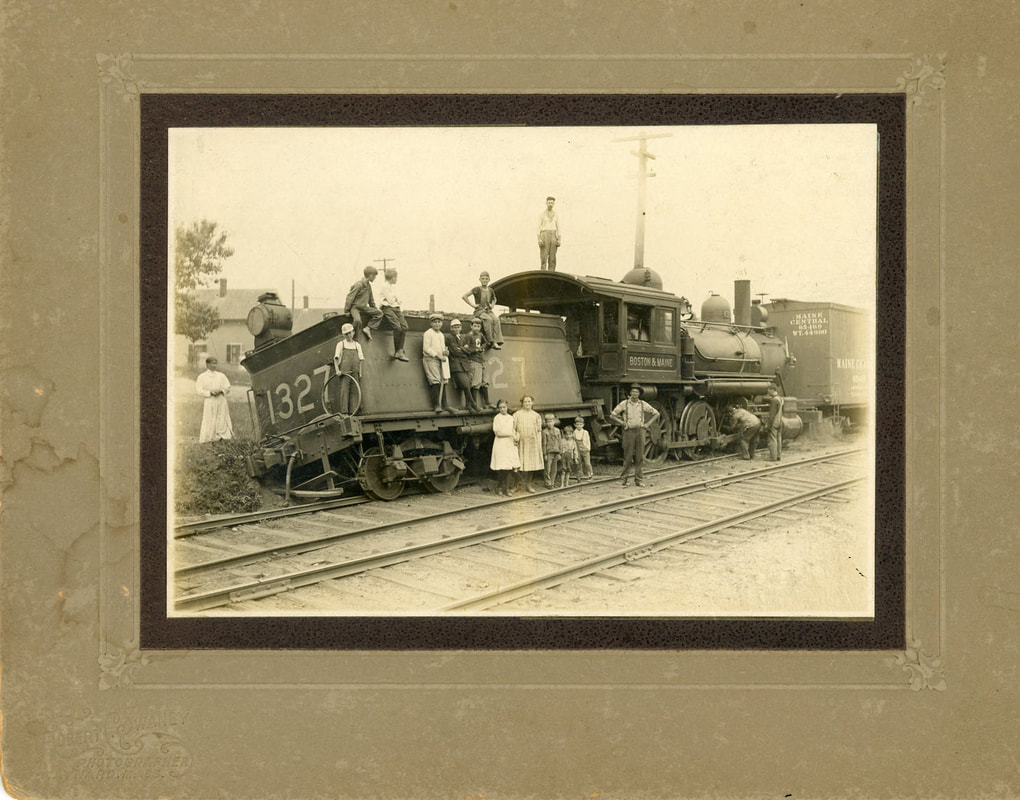
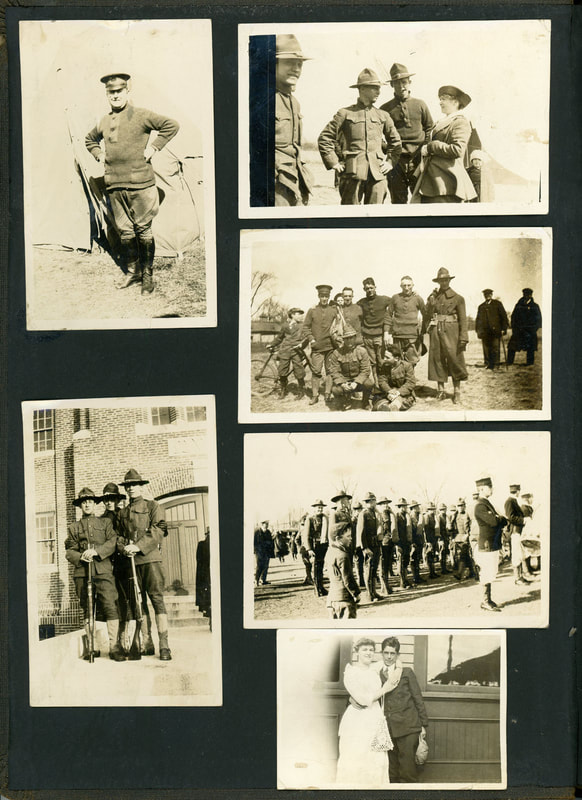
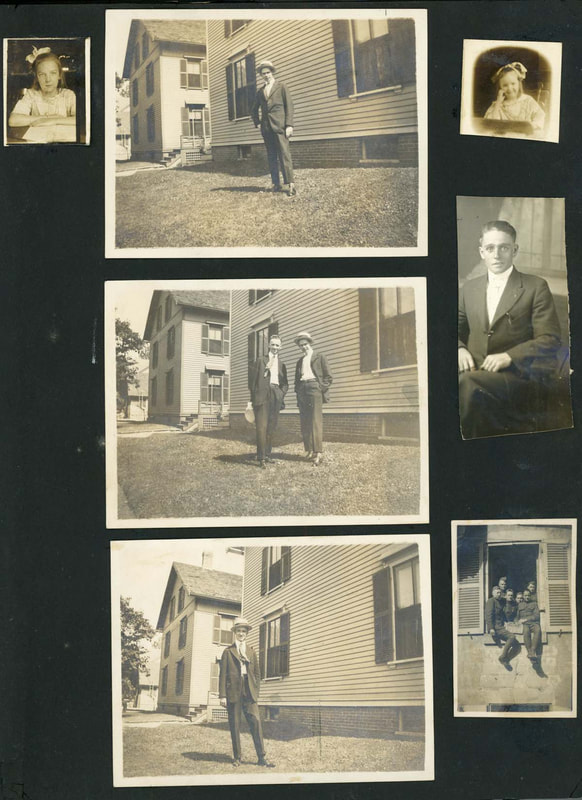
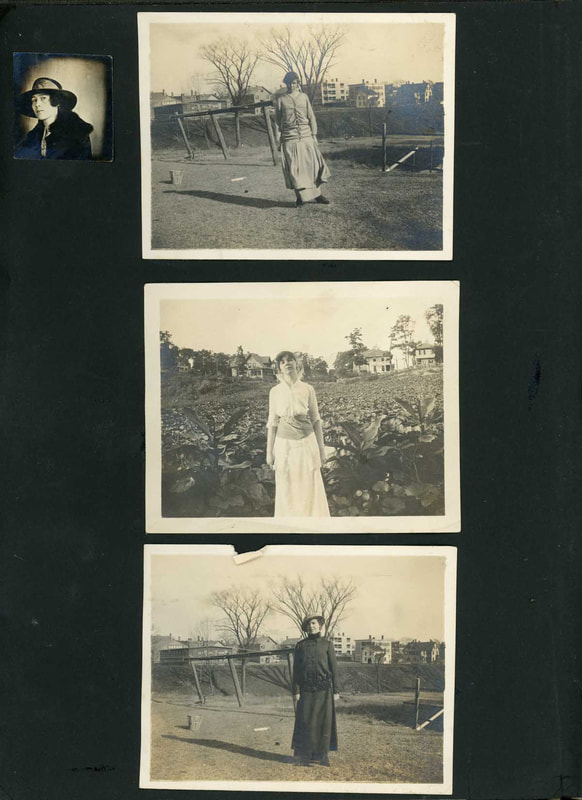
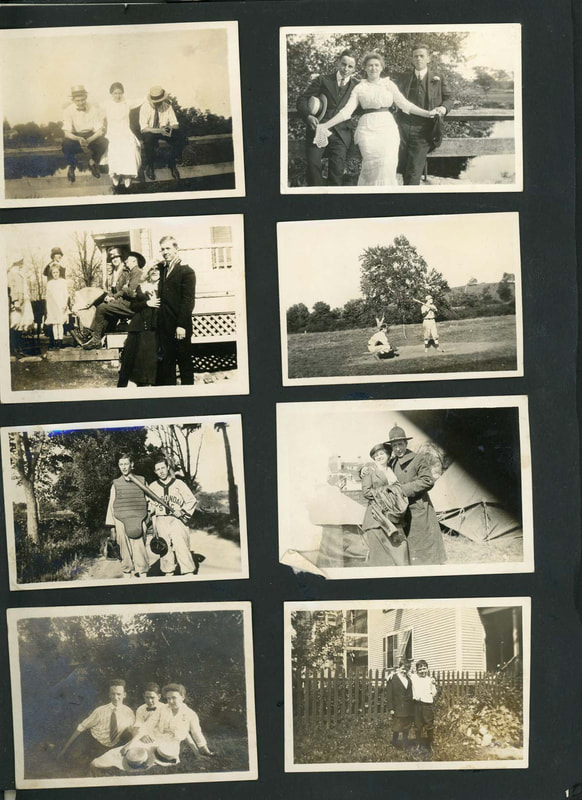
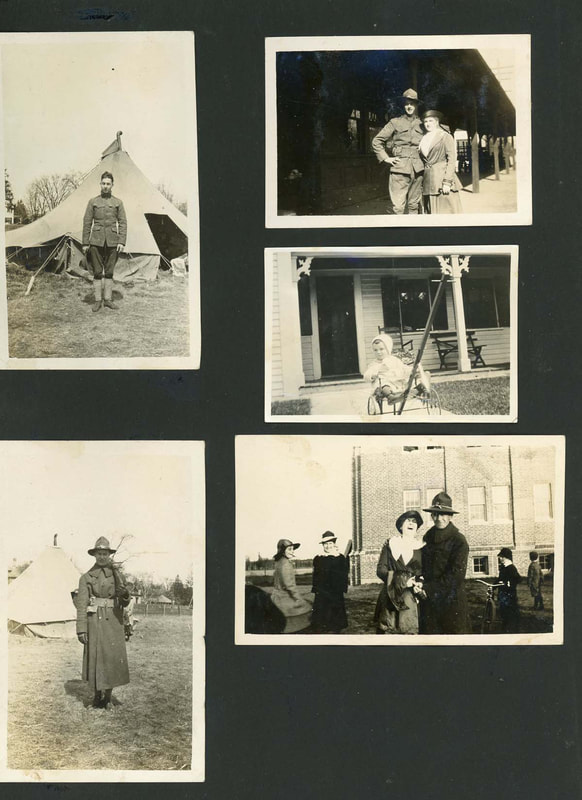
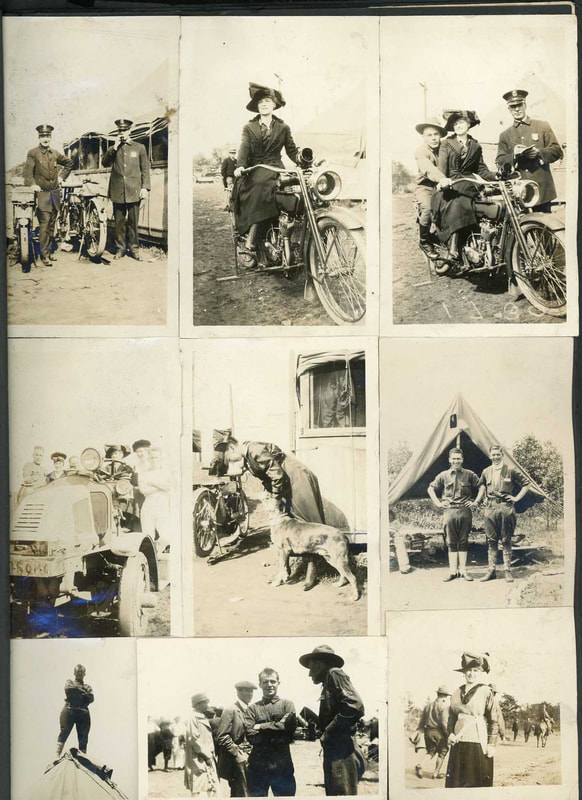
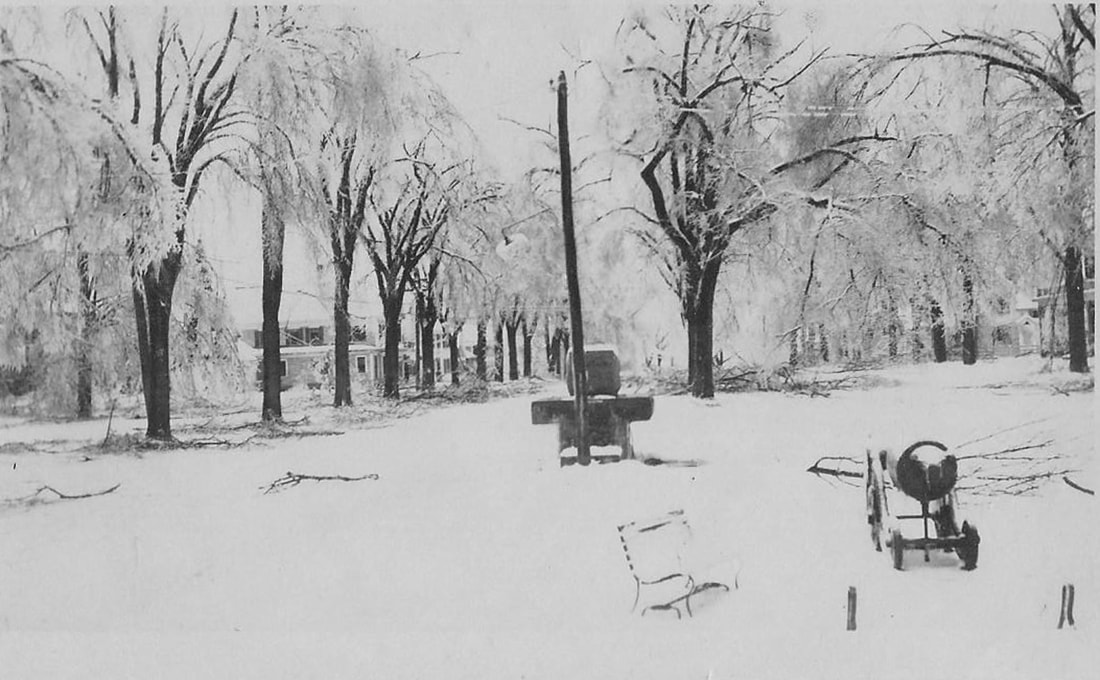
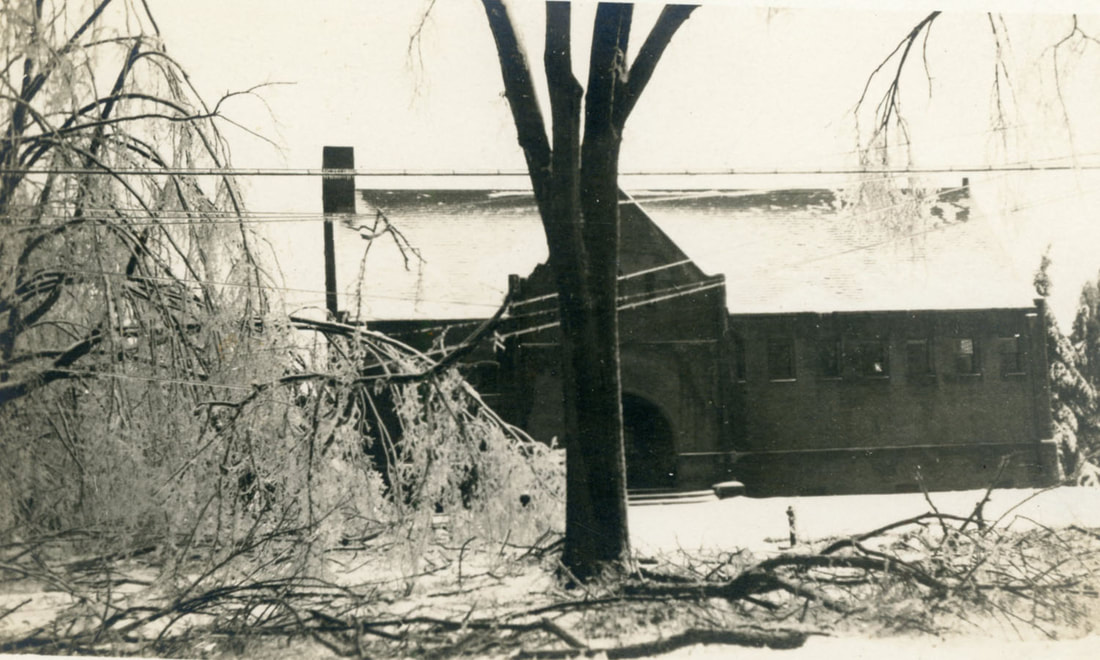

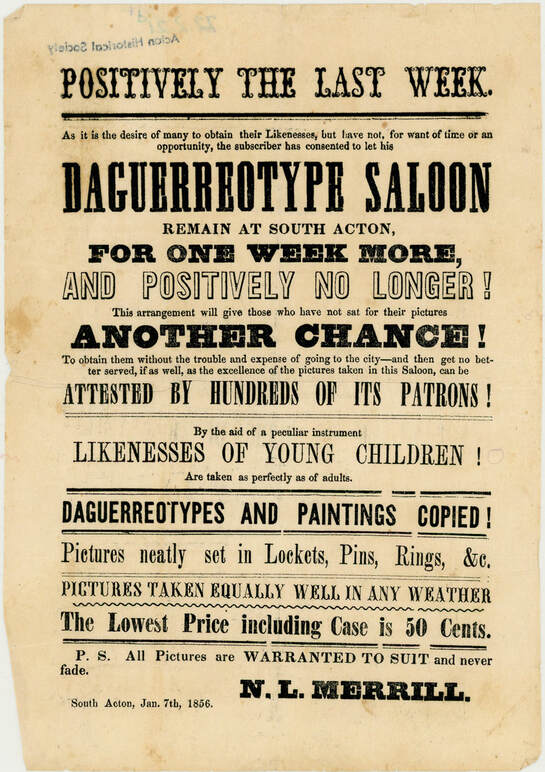
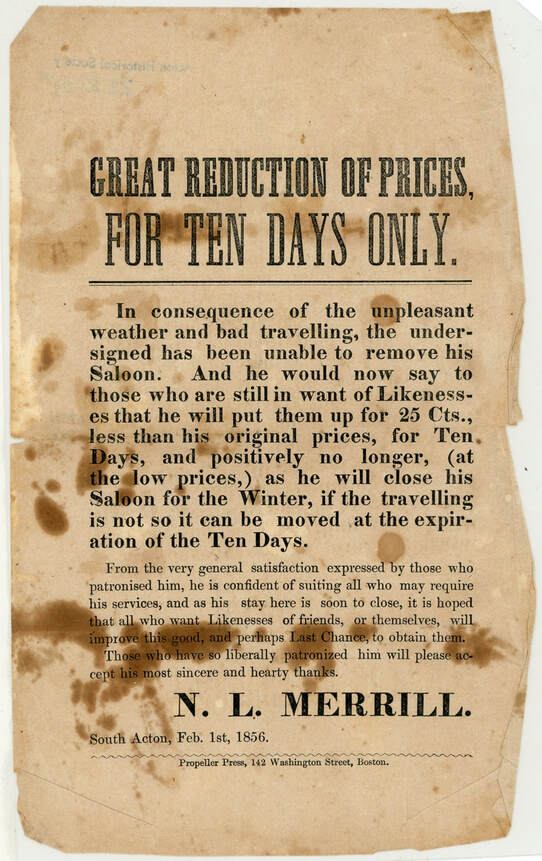
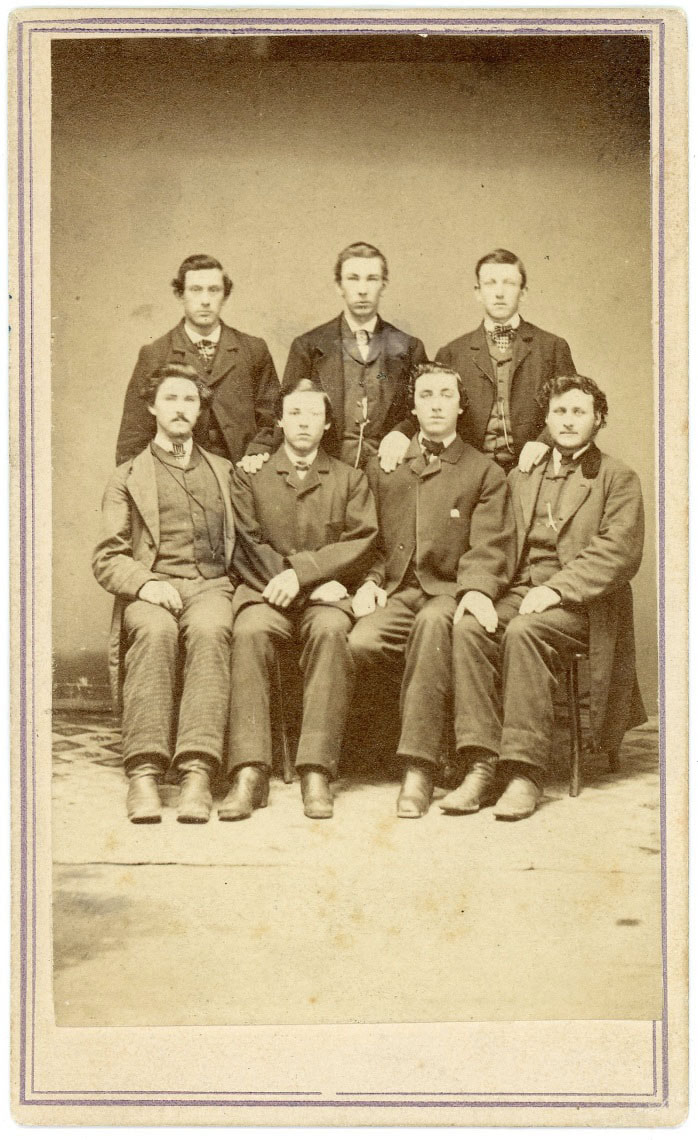
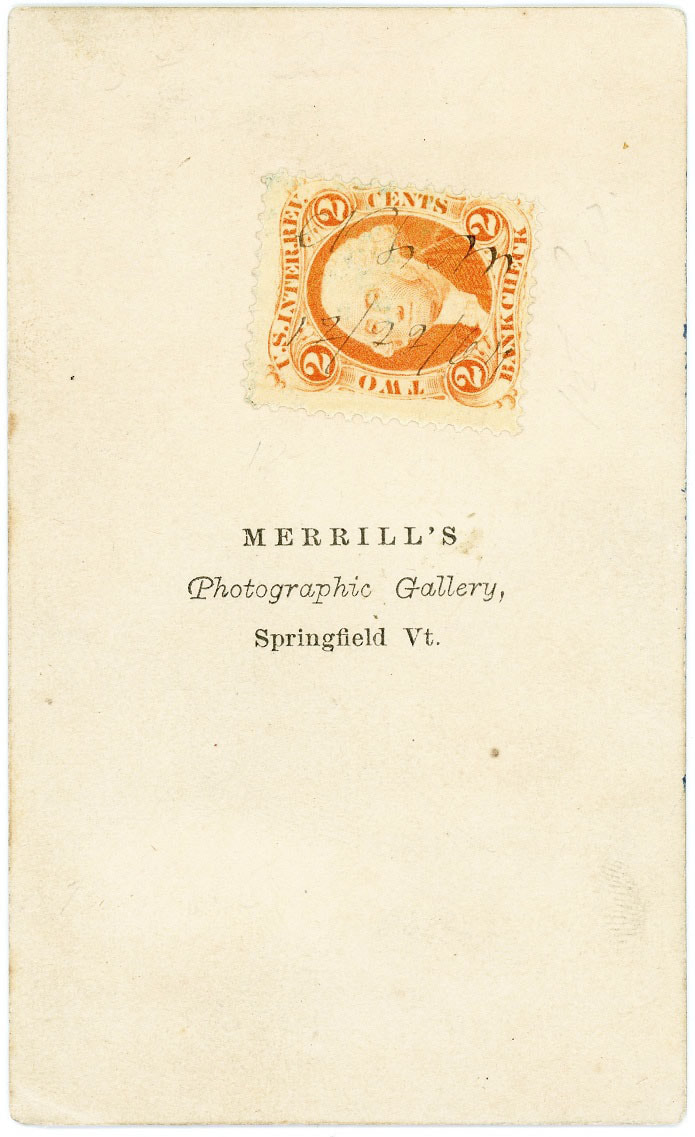
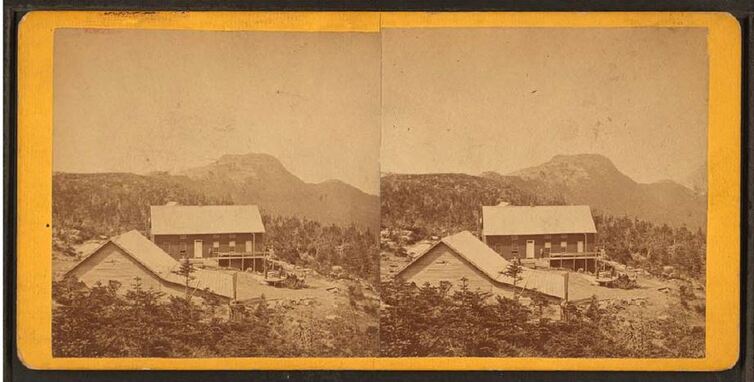
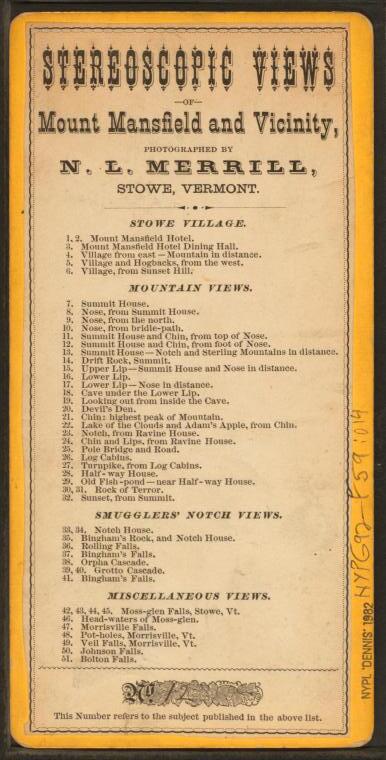
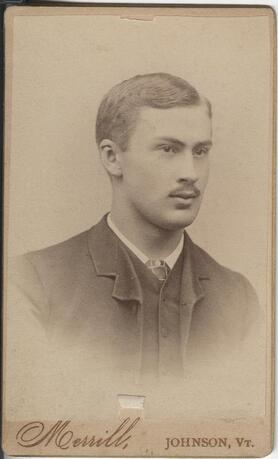
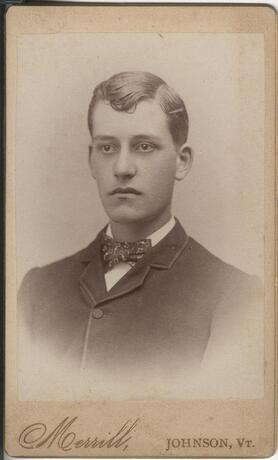
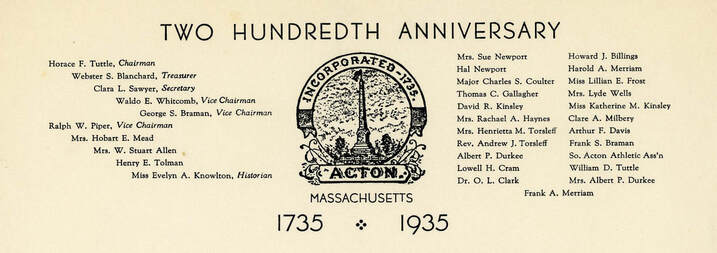
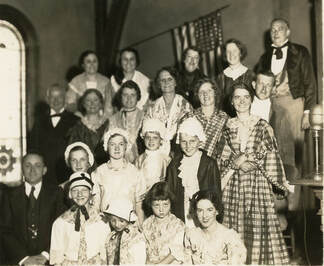
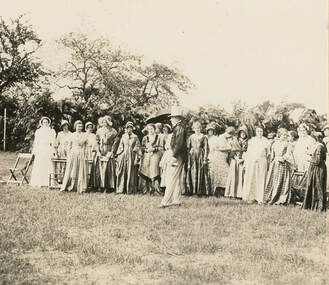
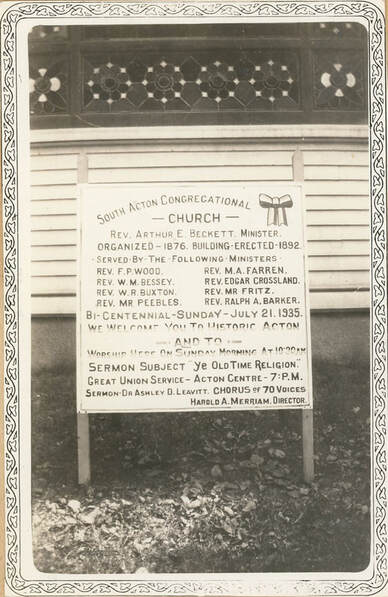

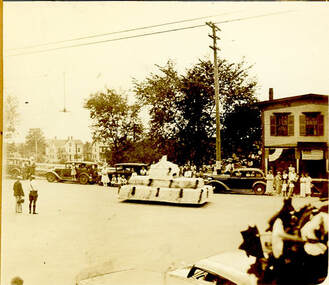
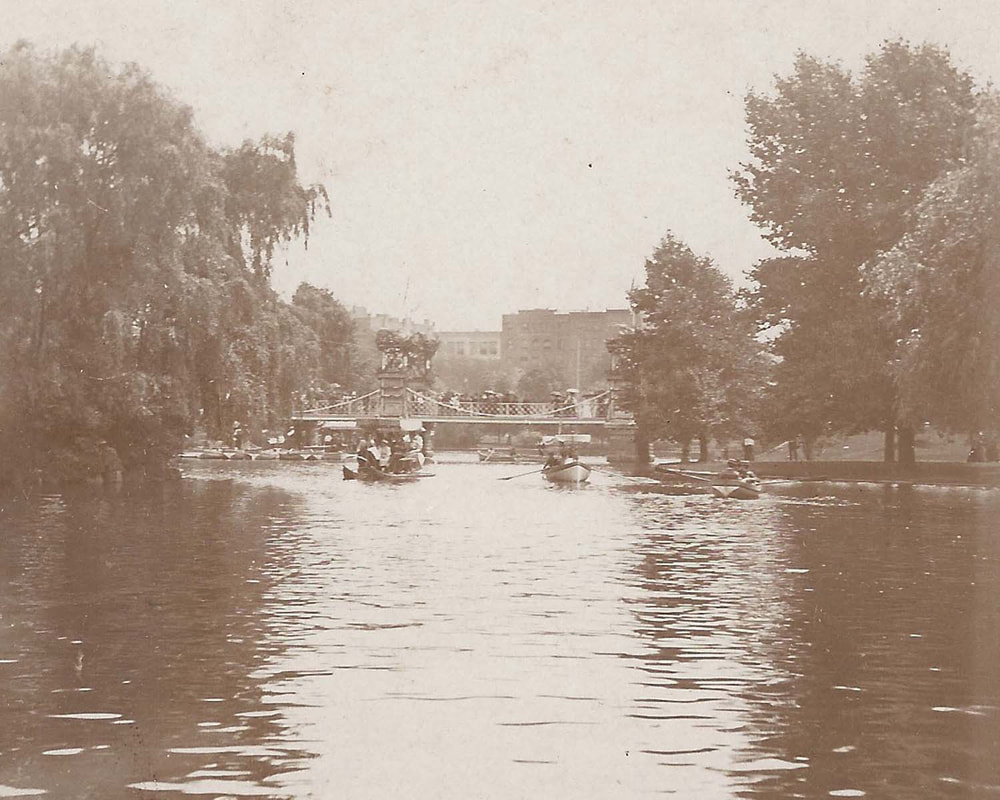
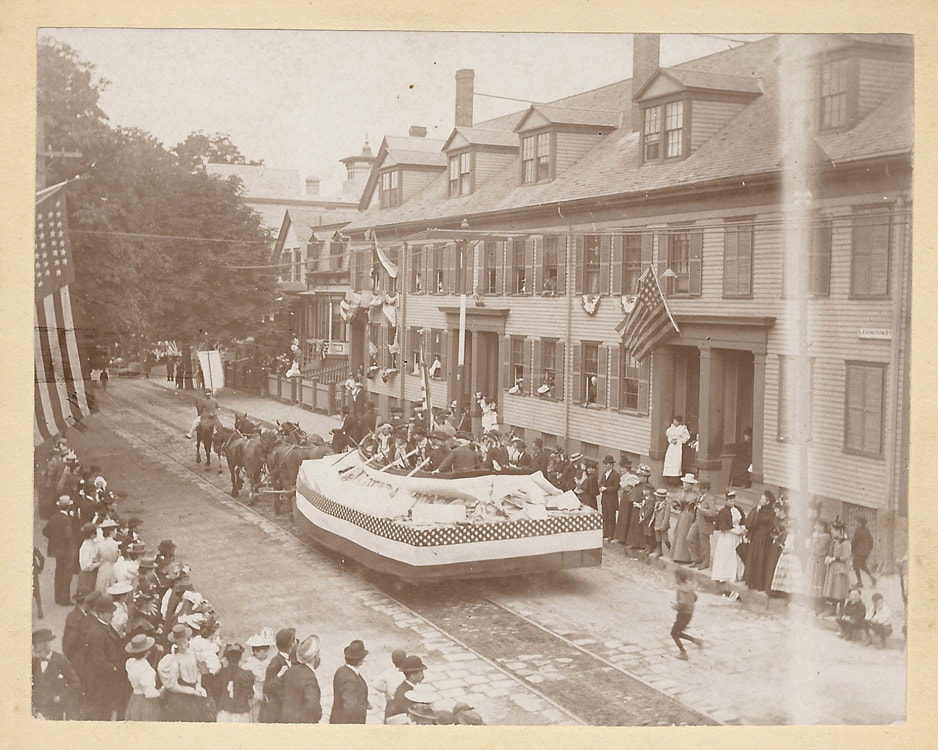
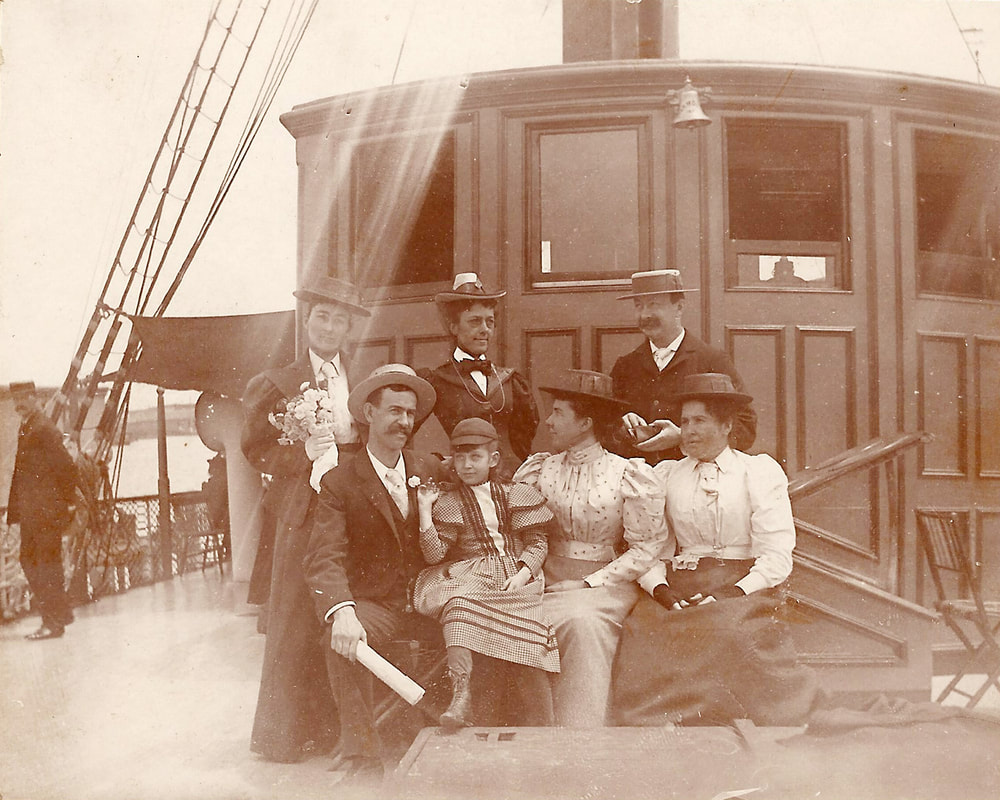
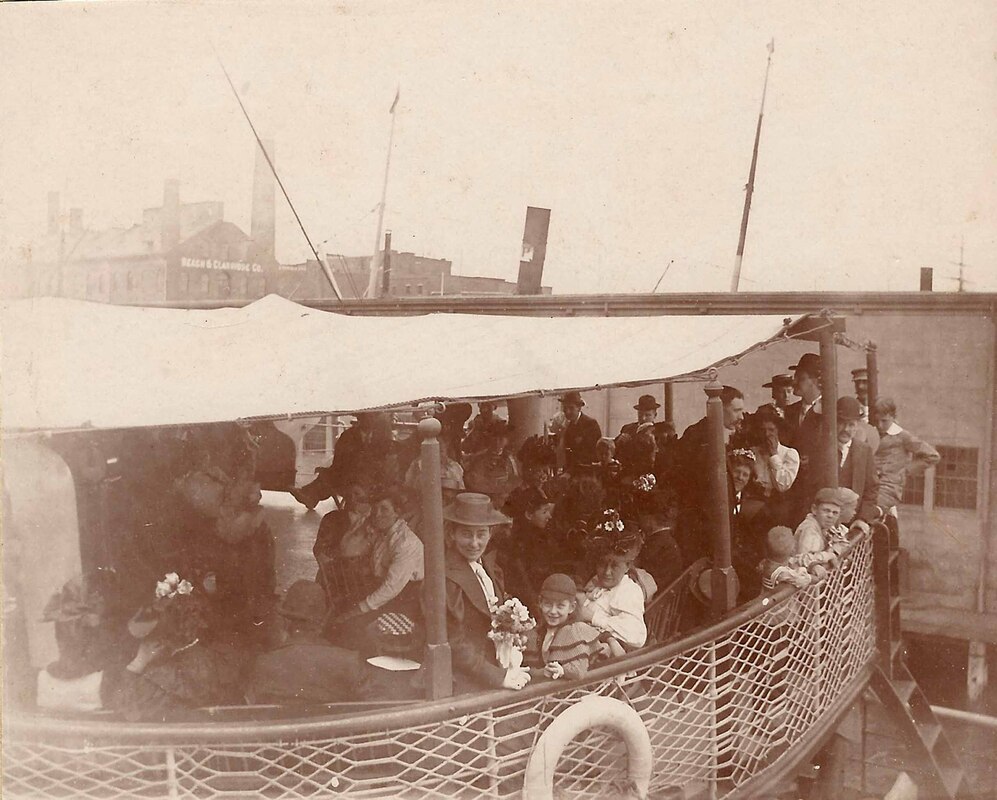
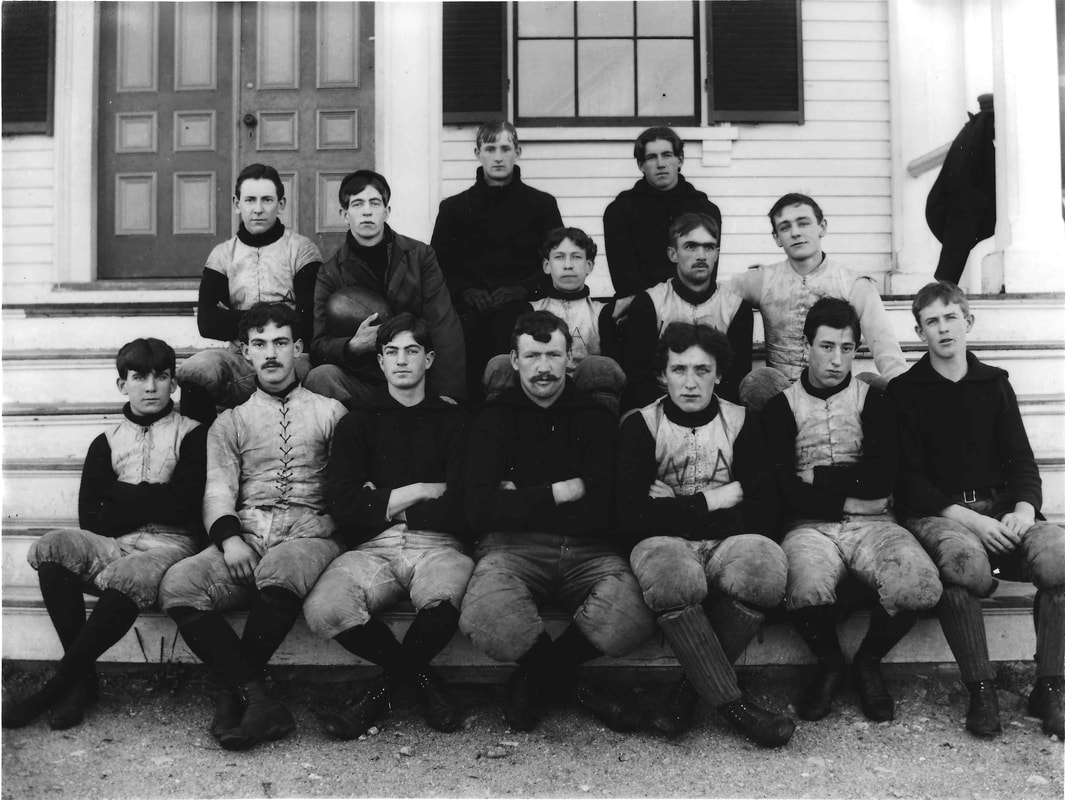
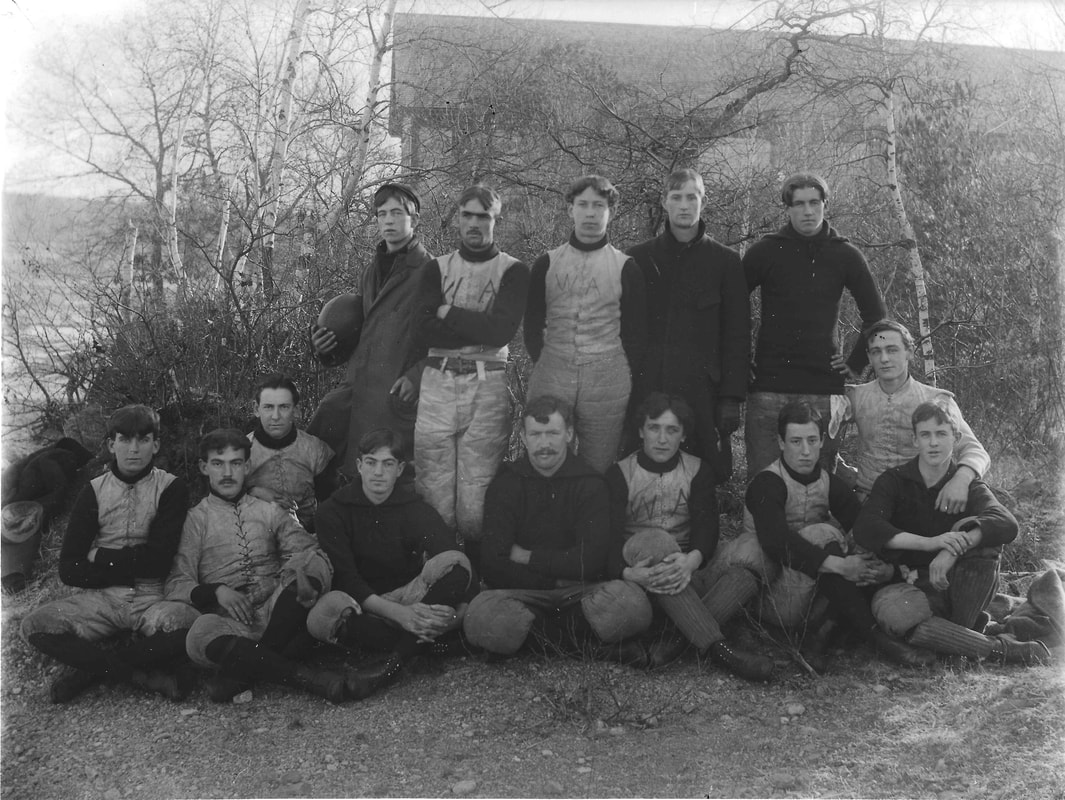
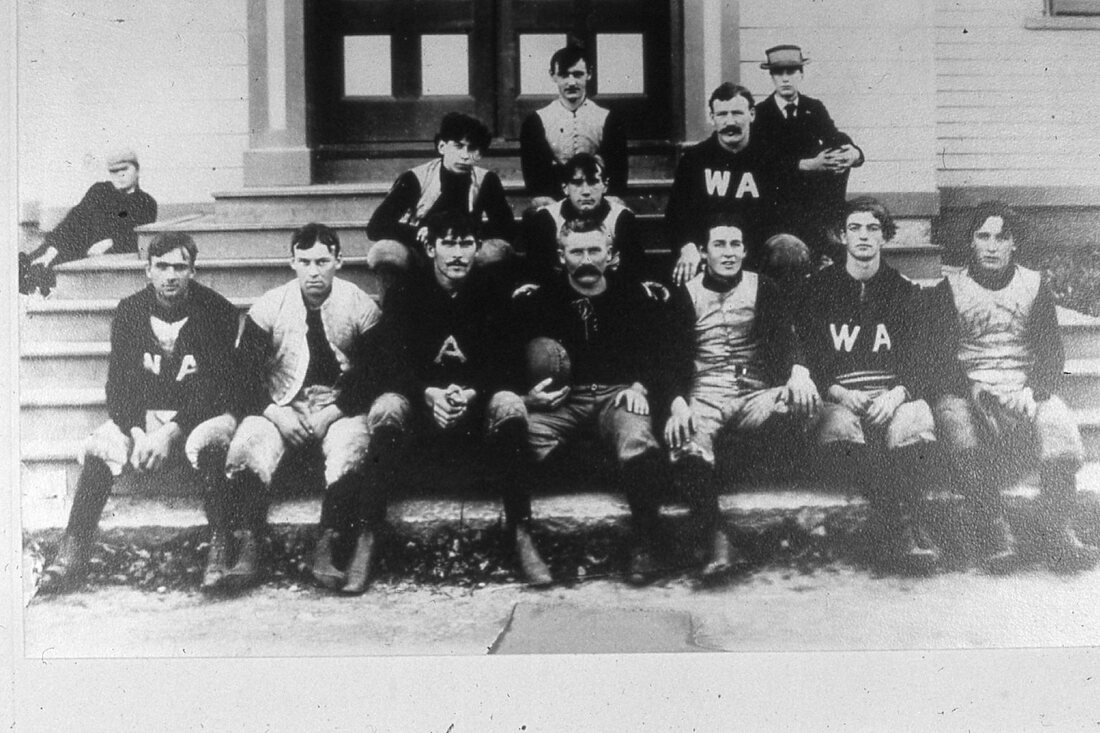
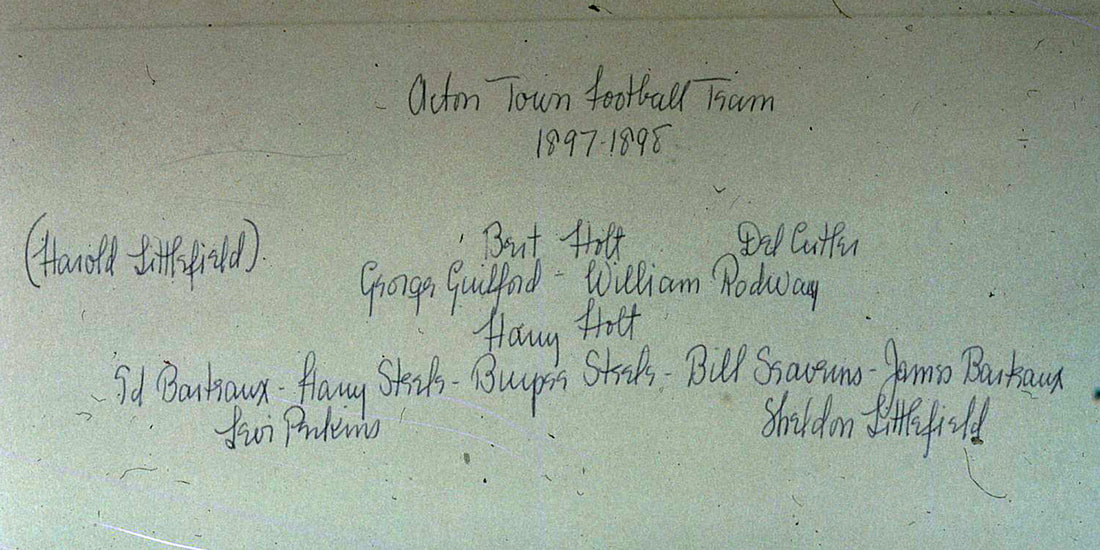
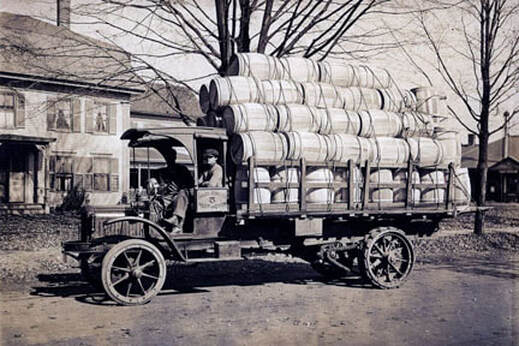
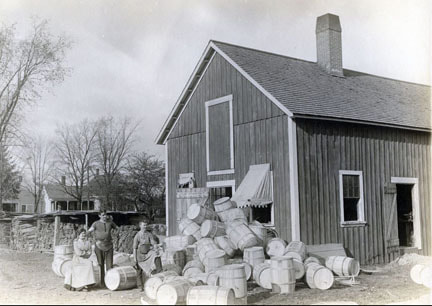

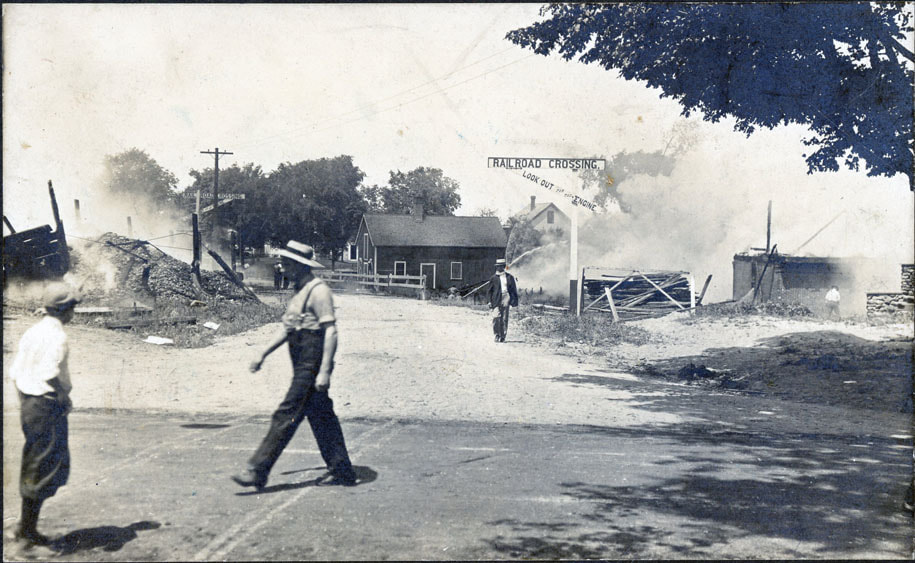
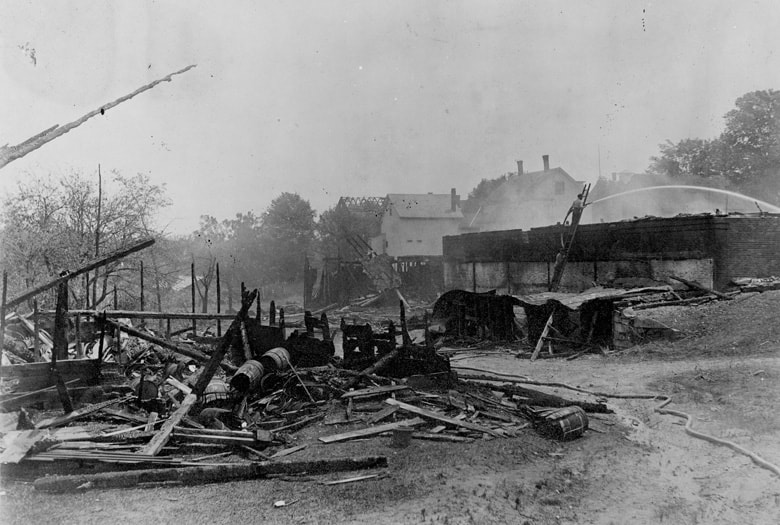
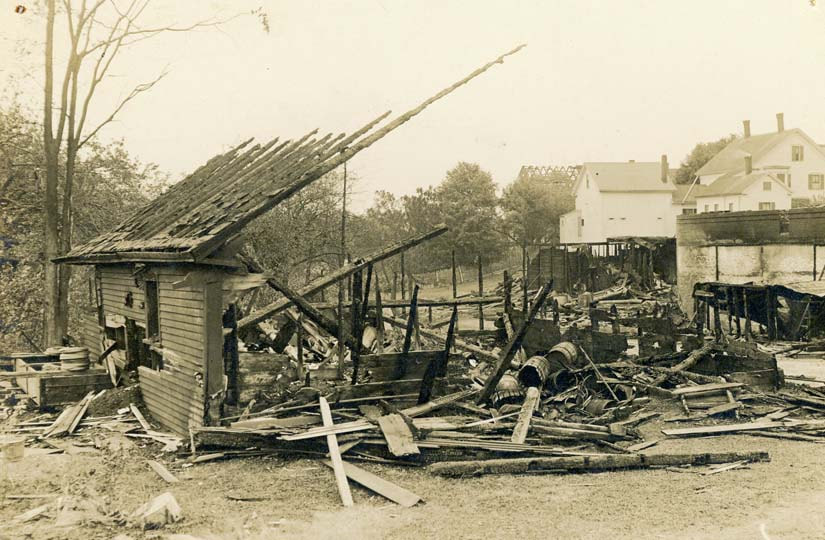
 RSS Feed
RSS Feed